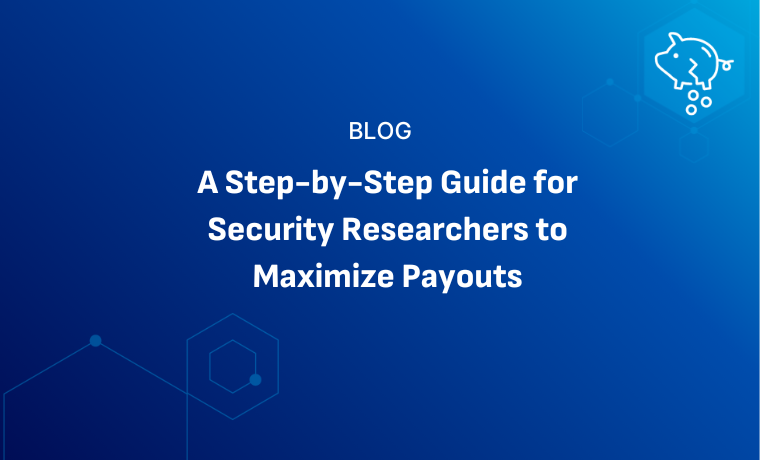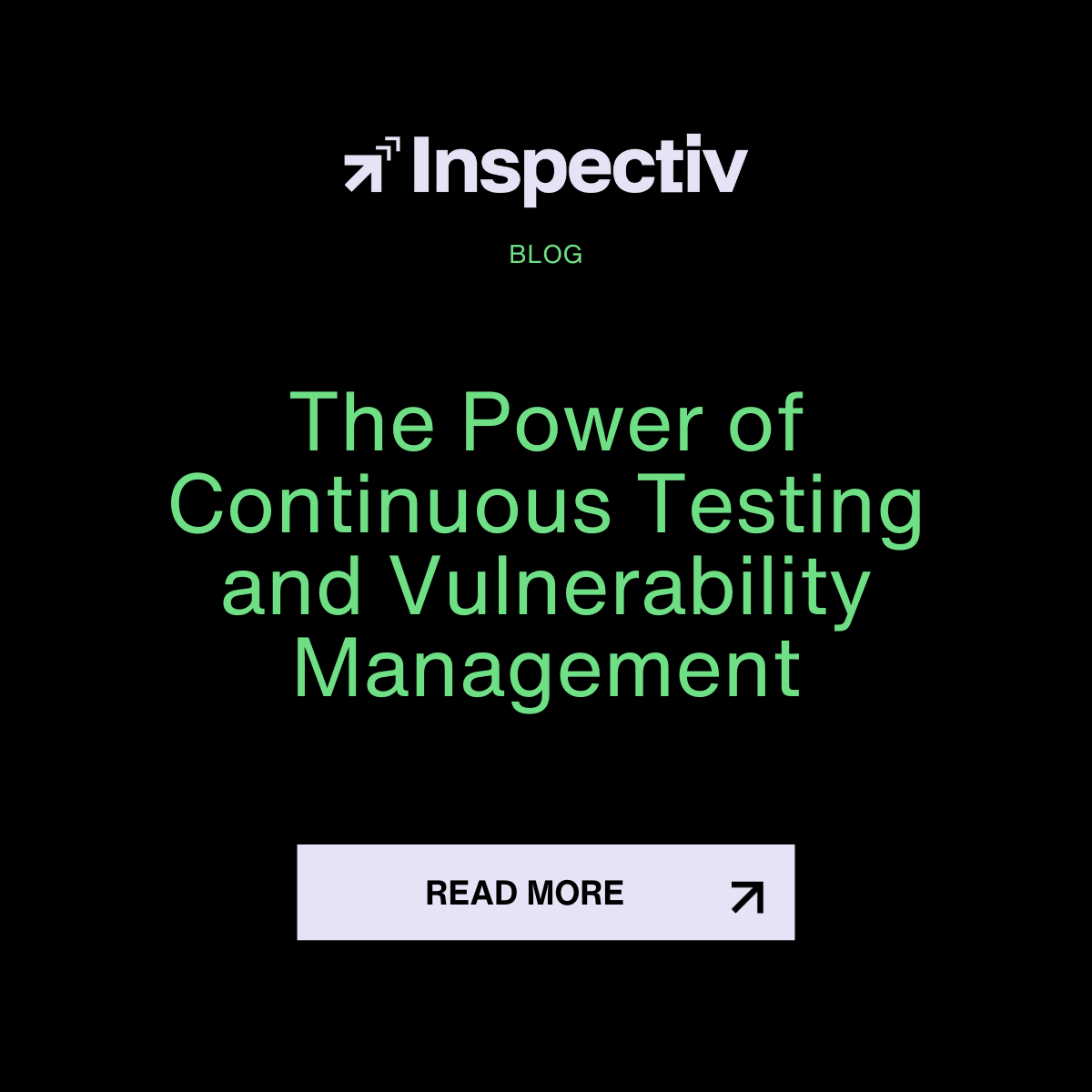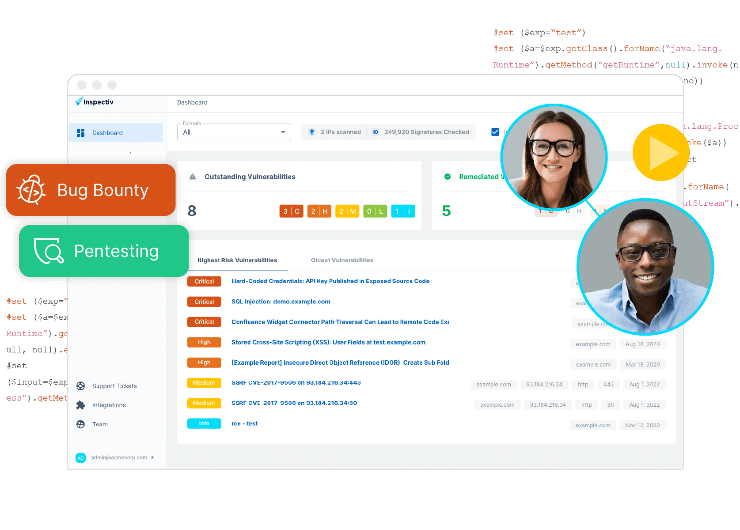In the world of cybersecurity, leaders are constantly evaluating the most effective methods to protect their organizations from threats. Bug bounty programs and traditional pentesting are two popular approaches.
Let’s explore the key differences, costs, and effectiveness of bug bounty programs and traditional pentesting and compare the return on investment (ROI) of each cybersecurity approach. This comparison will enable CTOs and CISOs and the like to make well-informed decisions for their organizations.
Evaluating the ROI of Bug Bounty Programs
The cost-effectiveness of bug bounty programs lies in their unique structure. Since they leverage a global pool of security researchers with diverse skill sets and experiences, they have a wide scope and can lead to continuous security improvements. As a result, they can potentially be more cost-effective than traditional pentesting, which usually involves higher fixed costs.
That said, bug bounty programs also present unique expenses, such as management costs and rewards for discovered vulnerabilities. Even with these additional charges, bug bounty programs typically have a significantly lower cost per vulnerability versus traditional pen testing: sometimes as much as 1/10th the cost.
The Effectiveness of Identifying Vulnerabilities Year-Round
Unlike traditional pentesting, bug bounty programs allow for continuous, year-round testing, which often leads to the discovery of more vulnerabilities. That’s one of the reasons security leaders like Splunk are embracing and advocating for bug bounty programs.
Since bug bounty programs attract a diverse group of security researchers, they benefit from a mix of skills, backgrounds, and testing methodologies. This means that even complex or less obvious vulnerabilities have a higher chance of being discovered, which is why bug bounty programs can yield a higher ROI compared to traditional pen testing.
Evaluating the ROI of Traditional Pentesting
In traditional pentesting, the bulk of the cost comes from the professional fees of the pentesters. These experts can command high fees due to their specialized knowledge and expertise. Traditional pentesting also involves costs associated with downtime during testing and any additional resources required to address the pentest findings.
The Limitations of “Point in Time” Testing
One of the main limitations of traditional pentesting is that it provides only a snapshot of the system’s vulnerabilities at a specific point in time. This means that new vulnerabilities that arise after a pentest has been concluded may remain undetected until the next scheduled test. In contrast, bug bounty programs offer a way to monitor for new vulnerabilities continuously.
Bug Bounty Programs vs Traditional Pentesting
When comparing bug bounty programs and traditional pentesting, you must consider the financial implications and resource allocation. Bug bounty programs generally operate on a pay-for-results model, making them potentially more cost-effective. These incentives also attract security experts that might not be available via pen testing.
Traditional pentests also have a proven record of effectiveness. They offer a systematic, comprehensive assessment of a company’s vulnerabilities, although by way of point in time testing. Companies can become exposed in the times that pentests are not conducted.
Bug bounty programs may excel at addressing evolving cybersecurity threats because they continuously crowd-source, gathering experts in new and emerging fields. A lot also depends on complexity: traditional pentests are valuable in identifying vulnerabilities in complicated, interconnected systems.
Another critical factor is the time-to-identify and time-to-fix vulnerabilities. With a continuous approach, bug bounty programs can offer a faster time-to-identify, while controlled pentests could provide a quicker time-to-fix due to their concentrated timeline, even where coverage is limited.
Can Businesses Combine Bug Bounty Programs and Traditional Pentesting?
Yes! A hybrid approach integrating both bug bounty programs and traditional pentesting can provide comprehensive security coverage that balances access to the right security experts and consistent, predictable economics. Ultimately, both strategies can enable businesses to offload work from busy security teams.
A layered approach also leverages the strength of robust point-in-time pentesting complemented by continuous bug seeking during development. If managed properly, a business can dramatically increase the software of their security without adding headcount.
This is why most businesses end up relying on both, using bug bounty programs for continuous monitoring and broad scope, with traditional pentesting for in-depth, systematic assessments at regular intervals.
Future Trends in Bug Bounty Programs and Traditional Pentesting
Technological advancements, such as increased automation in pentesting and AI tools in bug bounty programs, will likely significantly impact both approaches. GenAI will make human pentesters far more effective, helping them quickly create more complex test scripts as well as assist with time-consuming reporting and documentation.
It’s also expected that traditional bug bounty researchers will also get more effective with the help of AI. But the rapid growth of AI-driven no/low code dev tools might mean we’re nearing a point where automated testing can check the work of automated developers–although humans will always have a critical role to play.
The increased pressure and scrutiny around cybersecurity around the world means that bug bounty program adoption will continue to rise, as software teams look to onboard expertise without hiring full-time experts. It’s not just private sector orgs either, as the US Department of Defense now runs a very popular “Hack the Pentagon” bug bounty program that’s uncovered over 7K vulnerabilities. There has been a rise in cybersecurity attacks since Covid. IMF.com States that “Cyberattacks have more than doubled since the pandemic. While companies have historically suffered relatively modest direct losses from cyberattacks, some have experienced a much heavier toll.”

The adoption of bug bounty programs continues to accelerate. Tech giants like Intel now run their own bug bounty programs, and the amounts paid to researchers continue to grow. Perhaps not surprisingly, crypto platforms have paid some of the biggest rewards, including $10M paid to a researcher who discovered a vulnerability in the Wormhole blockchain bridge.
As the need for cybersecurity expertise continues to rise, and software gets more complex and interconnected, threat researchers will continue to evolve their tools and tactics. This will inevitably impact the use of bug bounty programs as tech continues to grow.
The Bottom Line
While both methods offer significant benefits, their effectiveness and ROI can vary depending on an organization's specific needs and circumstances. Decision makers need to evaluate both with business and security priorities in mind.
- Pentesting gives businesses a complete point in time view of their system. These traditional methods are easily understood by customers and stakeholders and are critical to measuring security maturity over time. They’re also regularly required by regulators and compliance and risk partners.
- Bug bounty programs let organizations go deep or wide as needed, simply by bringing in new researchers and specialists, This more iterative approach also means bugs can be found and corrected faster, helping organizations achieve meaningful and continuous improvements in security over time.
For CTOs, the key lies in understanding these differences to devise an effective cybersecurity strategy. Given the evolving cybersecurity landscape, it may be beneficial to consider a hybrid approach, leveraging the strengths of both bug bounty programs and traditional pen testing.
Ultimately, the decision should be guided by an organization's risk tolerance, compliance requirements, and commitment to maintaining robust, round-the-clock cybersecurity.










